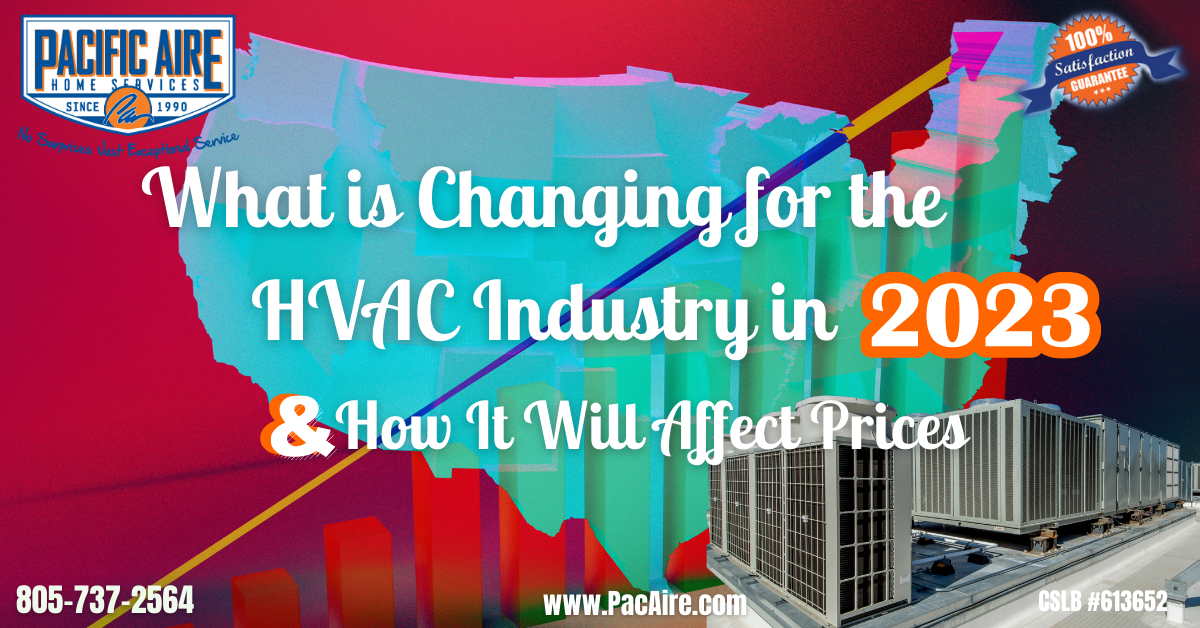With so much talk about inflation and price increase, it might be high time to repair or replace your old HVAC system before the year ends.
Prices for new air conditioners will increase substantially on the first month of 2023 – and the main reason is NOT just inflation. Manufacturers are redesigning HVAC system components right now to meet the new requirements and standards set for 2023.
While there is some good that will come from the new rules, this will, unfortunately, mean prices will increase. Get your new system now before the prices go up.
Sustainable developments are on the horizon for the HVAC industry. Heightened energy efficiency and eco-minded refrigerant requirements will soon take effect. With this, the cost of air conditioners will increase dramatically starting on January 1, 2023. It is because the new minimum efficiency standards will go into effect as required by the DOE (Department of Energy).
SEER regulations
The seasonal energy efficiency ratio is also known as SEER. This is a measure of how much cooling an air conditioner produces in comparison with how much energy it consumes. The higher the SEER rating, the more efficient the air conditioner.
There will be two SEER-related changes beginning January 1, 2023. The minimum SEER rating for HVAC equipment will be increased.
There will be a minimum SEER requirement of 1 SEER higher for air conditioning and heat pump systems. According to federal regulations, new air conditioners must have a minimum SEER of 13 in northern states and 14 in southern states. This will be changed to 14 and 15 by 2023.
Second, SEER 2 will be adopted by the industry. As with its predecessor, SEER 2 measures the amount of heat removed from space in relation to the amount of energy used. Real-life conditions will be better reflected in testing conditions.
HVAC equipment, including AC condensers and heat pumps, will have to display their SEER 2 rating by 2023. HVAC industry alerts are now warning of significant price increases in 2023.
Here are four reasons why the price has increased:
- To achieve a higher efficiency rating, air conditioner fans and their covers will be different designs. With larger units, the design costs more.
- It will be necessary to increase the physical size of the indoor cooling and outdoor air conditioner coils in order to gain more efficiency. As a result, copper, aluminum, and steel will cost more.
- In order to achieve a high-efficiency rating, cooling equipment components will perform better. The advantage is that these parts generally last longer and are of higher quality.
- Physically larger units require more labor to handle, and fewer units can fit into a rail car or truck so shipping and handling costs will increase.
Regulations on AC Refrigerants
R-22 (Freon) refrigerant is being replaced by R-410 (Puron). There are fewer environmental and health hazards from it and it does not harm the ozone layer.
EPA is likely to require another switch to A2L refrigerants by 2025. A2L is mildly flammable, although it has a lower Global Warming Potential (GWP) than alternatives. The HVAC industry is already designing new technology to accommodate A2L. There are also new technologies for storing and transporting A2L systems and equipment that shuts off automatically when a leak occurs.
Should I upgrade my old HVAC system?
This change means homeowners should be asking themselves, is it a good time to replace our HVAC system before 2023? Replace your HVAC unit if:
- It is having constant breakdowns that are getting expensive to repair.
- It utilizes an ozone-depleting refrigerant called “R22.” Regardless of whether the air conditioner is working or not, the refrigerant is no longer being made.
- The system is over 12 years old, regardless of whether it is functioning.
Prepare and save with Pacific Aire.
Visit https://bit.ly/pacaire_heating_replacement or call us at 805-737-2564 for more information about our heating replacement and installation services.


